Hola una vez más.
Hi again.
En el siguiente enlace podéis ver nuestros próximos viajes fotográficos y de observación de aves y mamíferos nacionales y al extranjero. Espero que os gusten y os animéis a venir conmigo. Una experiencia que nunca olvidareis.
Hi again.
En el siguiente enlace podéis ver nuestros próximos viajes fotográficos y de observación de aves y mamíferos nacionales y al extranjero. Espero que os gusten y os animéis a venir conmigo. Una experiencia que nunca olvidareis.
In the following link you can see our next national and foreign Birds and Mammals photographic and observation trips. I hope you like them and I encourage you to come with me. An experience that you will not forget.
En este interminable blog os voy a mostrar algunas de las aves que vimos en nuestro viaje organizado a Varanger, Noruega, del 17 al 26 de mayo.
In this endless post I am going to show you some of the Birds we saw in our organized trip to Varanger, Norway, from May 17 to 26.
En total, llegué con unas 9.000 fotos que he tenido que ver y he procesado las que más me han gustado. En total me he quedado con unas 1.500 aunque no os preocupéis que solo he subido unas 750. Lo digo por aquello de que al que no le gusten las aves que no se le ocurra intentar leerlo. 😅😅😅😅 Pero por otro lado al que le gusten que disfrute de el. 💪💪💪💪
In total, I arrived with about 9,000 photos that I had to see and processed the ones I liked the most. In total I have stayed with about 1,500 although do not worry because I have only put about 750. I say this because of that who does not like Birds do not even think to try to see it. 😅😅😅😅 But, on the other hand, who likes Birds go ahead and enjoy it. 💪💪💪💪
He elegido hacer esta narración por días y por ello algunas de las aves estarán repetidas pero es lo que he decidido y espero que os guste.
I have chosen to do this post for days and therefore some of the Birds will be repeated but that is what I have decided and I hope you like it.
En cuanto al tiempo comentaros que fue frío y bastante nublado. Sin embargo, a pesar de no subir de 6 grados centígrados en los días más cálidos pasé menos frío del que yo esperaba. De todos modos nos comentaron que estaban teniendo un mes de mayo atípico por el frío y mal tiempo que estaban teniendo. Esperemos que el año que viene sea más templado y soleado.
Regarding the weather, it was cold and quite cloudy. However, despite not going up of 6 degrees Celsius on the warmer days I had less cold than I was expecting. Anyway, they told us that they were having an atypical May month because of the cold and bad weather they were having. Hopefully next year it will be more temperate and sunny.
Después de esta maravillosa experiencia he decidido ofertar otro viaje fotográfico a este increible lugar pero visitando el último día Finlandia para ver las aves que en Varanger no se pueden ver y que sea aún más completo el viaje. Os dejo un link con precios y descripción del viaje por si estáis interesados: Del 15 al 24 de Mayo Varnager y Finladia
After this wonderful experience I decided to offer another photographic trip to this amazing place but visiting the last day of Finland to see Birds that in Varanger can not be seen and that the trip will be even more complete. I leave a link with prices and description of the trip if you are interested:
De todas las aves que vimos las que más me gustaron fueron los machos de combatientes (Philomachus pugnax) con plumaje nupcial y que cada macho tiene una coloración distinta. En la foto el que mas me gustó y el que más cerca tuvimos.
Of all Birds that we saw, the ones I liked the most were the males of Ruff with nuptial plumage and that each male has a different color. In the photo the one I liked the most and the one which was closest to us.
Día 17:
Day 17th:
Llegada al aeropuerto de Ivalo, Finlandia a las 17:30 de la tarde.
Arrival at Ivalo airport, Finland at 5:30 p.m.
En el viaje de ida al hotel donde nos hospedamos todos los días del viaje, pudimos tener contacto con las primeras aves del viaje.
On the trip to the Hotel where we stayed all days of the trip, we were able to watch the first Birds of the trip.
Y nada menos que vimos varias hembras de urogallos comunes (Tetrao
urogallus).
And no less than we saw several females of Capercaillie.
Que preciosidad de ave.
What a beautiful Bird.
Y también el primer lek de combatientes (Philomachus pugnax).
And also the first Ruff lek.
Fue una pena que no hubiera más luz.
It was a pity that there was no more light.
Como podéis ver cada uno con un plumaje distinto.
As you can see each one with a different plumage.
Día 18:
Day 18th:
Todos los días desayunábamos a las 7:00 de la mañana y salíamos a a visitar las zonas previstas a las 8:00. En la foto una lavandera blanca (Motacilla
alba).
Every day we had breakfast at 7:00 in the morning and went out to visit the areas planned at 8:00. In the photo a White
Wagtail.
Macho de ánade azulón (Anas
platyrhynchos).
Mallard Male.
Había muchas cornejas cenicientas (Corvus
cornix).
There were many Hooded
Crow.
Pero no eran fáciles de fotografiar y como había tantas siempre piensas que habrá otra oportunidad de fotografiarlas y al final esto es todo lo que tengo de ellas.
But they were not easy to photograph and as there were so many you always think that there will be another opportunity to photograph them and in the end this is all I have of them.
Nuestro primer contacto con los eideres comunes (Somateria
mollissima).
Our first contact with the Common Eiders.
Presentan un acusado dimorfismo sexual. La hembra es la que va delante.
They have a pronounced sexual dimorphism. The female is the one in front.
Pudimos ver como se zambullían para comer moluscos.
We could see how they dived to eat mollusks.
A lo lejos pudimos ver a este macho de eider de steller (Polysticta stelleri).
In the distance we could see this male Steller Eider.
Decidimos esperar y tuvimos suerte pues se acercó a donde estábamos.
We decided to wait and we were lucky as he approached where we were.
Fue una pena que no estuviese totalmente mudado.
It was a pity he was not completely molt.
Había muchos gaviones atlánticos (Larus marinus).
There were many Great black-backed Gulls.
También vimos muchas liebres árticas (Lepus arcticus).
We also saw many Arctic Hares.
Ya habían comenzado a cambiar al pelaje estival.
They had already begun to change to the summer fur.
Macho de silbón europeo (Anas penelope).
Male Eurasian Wigeon.
Ansar campestre (Anser fabalis).
Bean Goose.
Vimos muy pocas gaviotas reidoras (Chroicocephalus ridibundus).
We saw very few Black-headed Gulls.
Había ostreros euroasiáticos (Haematopus ostralegus) por todos los sitios.
There were Eurasian Oystercatchers everywhere.
Zarapito trinador (Numenius phaeopus).
Whimbrel.
Gaviota argentea europea (Larus argentatus).
European Herring Gull.
Archibebe común (Tringa totanus).
Common Redshank.
Y visitamos una numerosísima colonia reproductora de gaviotas tridáctilas (Rissa tridactyla).
And we visited a huge breeding colony of Black-legged Kittiwake.
Al ver lo que había en el mar ya nos dimos cuenta de las dimensiones de la colonia.
Seeing what was in the sea we already realized the dimensions of the colony.
Y tomamos unas fotos desde la parte de abajo del acantilado.
And we took some pictures from the bottom of the cliff.
Los cuervos grandes (Corvus corax) no paraban de merodear por la colonia seguro que para ver que podían robar.
Common Ravens did not stop prowling the colony to see what they could steal.
Cuando subíamos a la parte de arriba del acantilado, llamó mi atención este secadero de bacalaos (Gadus morhua).
While we climbed to the top of the cliff, this Atlantic cod dryer caught my eye.
Macho de collalba gris (Oenanthe
oenanthe).
Male Northern
Wheatear.
Págalo parásito (Stercorarius
parasiticus) morfo oscuro.
Dark morpho Arctic Skua.
Y unas pocas más de gaviota tridáctila (Rissa
tridactyla).
And some other photos of the Black-legged
Kittiwake.
Esta eligió un sitio poco común para anidar.
This one chose an unusual place to nest.
Y de regreso al Hotel volvimos a hacer algunas paradas. En la foto un chorlitejo grande (Charadrius
hiaticula).
And while returning to the Hotel we made some stops again. In the photo a Great
Ringed Plover.
Ánsares campestres (Anser
fabalis).
Bean
Geese.
Machos de ánade rabudo (Anas
acuta).
Males Northern Pintails.
Andarríos bastardo (Tringa glareola).
Wood
Sandpiper.
Y cuando iba a cenar pasó volando esta chocha perdiz (Scolopax
rusticola) que pude sacar con el teléfono móvil.
And when I was going to have dinner this Woodcock went flying and I was able to take it with my mobile phone.
Día 19:
Day 19th:
Era dificil desayunar pues delante del comedor había varios comederos y estaba lleno de aves. En la foto un zorzal real (Turdus pilaris).
It was difficult to have breakfast because in front of the dining room there were several feeders and it was full of Birds. In the photo a Fieldfare.
Zorzal alirrojo (Turdus
iliacus).
Redwing.
Carbonero montano (Poecile
montanus).
Willow
Tit.
Hembra de pinzón real (Fringilla
montifringilla). Fotografié muy pocas pues siempre me llamaban más la atención los machos.
Brambling female. I photographed very few of them because males always called me eye frist.
Macho.
Male.
Pardillo sicerín (Acanthis
flammea).
Common
Redpoll.
Después de mirar las previsiones del tiempo decidimos que este día íbamos a ir a la Isla de Ornoya. En la foto un pigargo europeo (Haliaeetus
albicilla) inmaduro.
After looking at the weather forecasts we decided that this day we were going to visit to the Ornoya Island. In the photo an immature White-tailed
Eagle.
Otra más.
Another one.
Los renos (Rangifer tarandus) campaban a sus anchas por todos los sitios.
The Reindeer roamed freely everywhere.
Chorlito dorado europeo (Pluvialis
apricaria).
European
Golden Plover.
Y nos encontramos con otro lek de combatientes (Philomachus
pugnax).
And we find another Ruffs lek.
Pero no nos paramos mucho tiempo pues teníamos que continuar hasta Ornoya.
But we did not stop for long because we had to continue to Ornoya.
Otros tres colores distintos.
Another three different colors.
Ánsares piquicortos (Anser
brachyrhynchus).
Pink-footed
Geese.
Y por fin llegamos al pueblo de Vardo para coger el barco que nos llevaría a la esperada isla de Ornoya.
And finally we reached the village of Vardo to catch the boat that would take us to the expected island of Ornoya.
Según nos ibamos aproximando a la isla ya pudimos ver los primeros araos comunes (Uria
Aalge).
As we were approaching the Island we could already watch the first common guillemots.
La isla.
The Island.
Era sobrecogedor ver la cantidad de aves que se dan cita en ella para su reproducción.
It was overwhelming to see the number of birds that come together in it for reproduction.
Pero si en el agua había muchas aves, más aun había en los acantilados.
But if there were many Birds in the water, there were even more in the cliffs.
Cormoranes moñudos (Phalacrocorax aristotelis).
European Shags.
Me gustó mucho comprobar el poco miedo que tienen estas aves al hombre.
I liked very much to see how little fear these birds have of man.
Ahora os voy a enseñar las aves que pudimos ver y para no ser repetitivo no voy a nombrarlas a no ser que sea una especie nueva y no descrita. En la foto un retrato de cormorán moñudo (Phalacrocorax
aristotelis).
Now I am going to show you the birds that we could see and to not be repetitive I will not name them unless it is a new and undescribed species. In the photo a portrait of a European Shag.
Frailecillo atlántico (Fratercula
arctica) recogiendo material para su nido.
Atlantic Puffin collecting material for its nest.
Arao Común (Uria
Aalge).
Common Guilllemot.
Alca común (Alca torda).
Razorbill.
Estas cuatro especies eran las más abundantes.
These four species were the most abundant.
En un momento dado decidí bajarme al embarcadero para sacar fotos a las aves en el agua.
At one point I decided to go down to the pier to take pictures of the Birds in the water.
Y también era buen sitio para algunos vuelos.
And it was also a good place for some flight shots.
Gavión atlántico (Larus marinus).
Great
black-backed Gull.
También había algunas parejas de araos de Brünnich (Uria
lomvia). Fijaos que además de tener un pico más fuerte tienen una raya blanca en la comisura del pico.
There were also some pairs of Brünnich's
Guillemot. Notice that in addition to having a stronger peak they have a white stripe at its corner.
Aquí se pueden ver varios.
Here you can see several.
Y otro par.
And another pair.
Me encantan los dibujos de los anillos oculares.
I love the drawings of the eye rings.
También había bastantes gaviotas tridáctilas (Rissa
tridactyla).
There were also quite a few Black-legged
Kittiwake.
Gaviota argéntea europea (Larus
argentatus).
European
Herring Gull.
Y como no, robandos huevos al que se despistase.
And of course, stealing eggs to ones who were confused.
Ojo que este es un arao de Brünnich (Uria lomvia). El único que saqué en vuelo.
Note that this is a Brünnich's Guillemot. The only one I took in flight.
Vimos varias peleas de frailecillos atlánticos (Fratercula
arctica) por ocupar el mejor nido. Eran muy violentas y largas.
We saw several fights of Atlantic Puffins for occupying the best nest. They were very violent and long.
De regreso a Vardo, vimos a este otro arao el aliblanco (Cepphus
grylle).
On the way back to Vardo, we saw this Black Guillemot.
Y también había bastantes correlimos oscuros (Calidris
maritima).
And there were also many Purple Sandpipers.
El camino de regreso al hotel estuvo muy entretenido. En la foto un grupo de combatientes hembra (Philomachus
pugnax).
The way back to the hotel was very excited. In the photo a group of Ruff females.
Gaviota tridáctila (Rissa
tridactyla).
Black-legged
Kittiwake.
Macho de serreta mediana (Mergus
serrator).
Male Red-breasted
Merganser.
Hembra.
Female.
Una pareja de ánades rabudos (Anas
acuta).
A pair of Northern Pintail.
Y esta de cercetas comunes (Anas
crecca).
And this one of Common Teal.
Este fue el único zarapito real (Numenius
arquata) que vimos a lo largo del viaje.
This was the only Eurasian Curlew we saw throughout the trip.
Un macho de Lagópodo común escandinavo (Lagopus
lagopus) que aún no tenia el plumaje de verano.
A male Willow
Ptarmigan that still did not have his summer plumage.
Y también vimos bastantes pigargos europeos (Haliaeetus
albicilla) adultos.
And we also saw a lot of adults White-tailed
Eagle.
Espectacular la fortaleza de su pico.
Spectacular the strength of its peak.
Día 20:
Day 20th:
En total vimos dos alces europeos (Alces alces) y los dos fueron machos en correal pero solo pude fotografiar a este.
In total we saw two European Elks and both were males in velvet but I could only photograph this one.
Este día decidimos ir hacia las poblaciones más al norte de la Península. En la foto un zorzal alirrojo (Turdus
iliacus).
This day we decided to go to the northernmost towns of the Peninsula. In the photo a Redwing.
La carretera que lleva hasta ellas pasa por zonas elevadas con abundancia de lagunas que en su mayoría continuaban heladas. En las pocas zonas donde había agua vimos a varias parejas de colimbos chicos (Gavia stellata).
The road that leads to them passes through elevated areas with an abundance of lagoons that mostly remained frozen. In the few areas where there was water, we saw several pairs of Red-throated
Divers.
Preciosas aves.
Beautiful Birds.
Vimos varios grupos de renos (Rangifer tarandus).
We saw several Reindeers herds.
Agachadizas comunes (Gallinago
gallinago).
Common
Snipe.
Y pudimos observar varios ejemplares de busardo calzado (Buteo lagopus).
And we were able to watch several specimens of Rough-legged
Buzzard.
Como os decía antes había demasiada nieve y hielo para que hubiesen llegado más aves a estos parajes.
As I said before there was too much snow and ice so that more birds had arrived to these places.
En otra de las lagunas semi helada había una pareja de cisnes cantores (Cygnus
cygnus).
In another of the semi-frozen lagoons there was a pair of Whooper
swan.
En este edificio abandonado había muchas parejas de gaviotas tridáctilas (Rissa
tridactyla).
In this abandoned building there were many pairs of Black-legged
Kittiwakes.
Pero lo mejor de todo el día fue poder ver y tener tan cerca varios ejemplares de chorlito dorado europeo (Pluvialis
apricaria).
But the best part of the day was being able to see and have so close several specimens of European Golden Plover.
En España no los solemos ver tan bonitos en plumaje nupcial.
In Spain we do not often see so beautiful in breeding plumage.
Impresionantes.
Awesome.
En una zona del puerto habían instalado estas cajas nido para que se reproduzcan los araos aliblancos (Cepphus
grylle).
In an area of the port they had installed these nest boxes for the reproduction of the Black Guillemots.
Me encanta el color rojo de sus patas.
I love the red color of their legs.
También vimos varias focas.
We also saw several seals.
Serretas grandes (Mergus
merganser).
Goosanders.
Vimos varios cormoranes grandes (Phalacrocorax
carbo). Los únicos que vimos en todo el viaje.
We saw several Great
Cormorants. The only ones we saw on the whole trip.
Correlimos oscuros (Calidris
maritima).
Purple Sandpipers.
Este fue el único zorro común (Vulpes vulpes) que vimos en todo el viaje. Llevaba una presa.
This was the only Red Fox that we saw throughout the trip. It was with a prey.
Y terminamos el día contemplando este ejemplar de busardo calzado (Buteo lagopus).
And we ended the day contemplating this specimen of Rough-legged
Buzzard.
Día 21:
Day 21st:
Este fue, bajo mi punto de vista, el segundo día más excitantes del viaje.
This was, in my opinion, the second most exciting day of the trip.
Empezamos con el avistamiento de correlimos comunes (Calidris
alpina) muy bonitos y confiados.
We started with the sighting of Dunlins very beautiful and fearless.
Había muchos bandos de correlimos gordos (Calidris
canutus).
There were many flocks of Red Knots.
Dos machos y una hembra de porrón osculado (Bucephala
clangula).
Two males and a female of Common
Goldeneye.
Vimos muy pocos ánsares comunes (Anser
anser).
We saw very few Greylag
Geese.
Una pareja de silbones europeos (Anas
penelope).
A pair of Eurasian
Wigeon.
Y como no, los omnipresentes ostreros euroasiáticos (Haematopus
ostralegus).
And of course, the omnipresent Eurasian Oystercatchers.
También había varias parejas de negrones especulados (Melanitta
fusca).
There were also several pairs of Velvet
Scoter.
Una pareja de porrones bastardos (Aythya
marila). EL macho va delante de la hembra.
A pair of Greater Scaup. Male goes in front of female.
El macho.
The male.
Adulto de pigargo europeo (Haliaeetus
albicilla).
Adult White-tailed
Eagle.
Desde la furgoneta vimos que había una concentración muy grande de eideres comunes (Somateria
mollissima). Decidimos hacer una parada para observarlos y cual fue nuestra sorpresa que entre ellos había un macho de eider real (Somateria
spectabilis).
From the van we saw that there was a very large concentration of Common Eiders. We decided to make a stop to observe them and what was our surprise that among them there was a male of King Eider.
Fue el primero y único Eider real (Somateria
spectabilis) que vimos durante el viaje.
It was the first and only King Eider we saw during the trip.
Durante el tiempo que estuvimos disfrutando del hallazgo, pasaron un muchas aves por encima o cerca nuestro. En la imagen un macho de pato havelda (Clangula
hyemalis).
During the time we were enjoying the find, they passed a lot of Birds over or near us. In the photo a Male Long-tailed
Duck.
Estaba lleno de charranes árticos (Sterna
paradisaea).
There were plenty Arctic Terns.
Un subadulto de gaviota tridáctila (Rissa
tridactyla).
A subadult Black-legged
Kittiwake.
Un macho de serreta mediana (Mergus
serrator).
A male Red-breasted
Merganser.
Una pareja.
A pair.
Me encantó ver como los págalos parásitos (Stercorarius
parasiticus) hostigaban a los charranes árticos (Sterna
paradisaea) hasta que estos regurgitaban el pez que habían capturado.En la foto un morfo claro.
I was delighted to see how Arctic Skuas harassed Arctic terns Sterna paradisaea) until they regurgitated the fish they had caught. In the photo a pale morph.
Les perseguían y acosaban hasta que lo regurgitaban.
They were persecuted and harassed until they regurgitated them.
Mientras tanto seguíamos pendientes del Eider Real (Somateria
spectabilis) por si se acercaba más a donde nosotros estábamos.
Meanwhile, we were still waiting for the King Eider in case it came closer to where we were.
No llegó a estar muy cerca pero lo vimos muy bien.
It did not get very close but we saw it very well.
Págalo parásito (Stercorarius
parasiticus) morfo oscuro.
Dark morpho Arctic Skua.

Un grupo se serretas grandes (Mergus
merganser).
A flock of Goosanders.
Págalo parásito (Stercorarius
parasiticus) morfo oscuro.
Dark morpho Arctic Skua.
Otro de los muchos hostigamientos de estas dos especies. Las más cercanas no les saque fotos y disfruté del espectaculo.
Another of the many harassments of these two species. The closest ones I did not take pictures of them and I enjoyed the show.
Después de haber conseguido robarle el pez al charrán, este págalo parásito (Stercorarius
parasiticus) morfo oscuro vino a posarse muy cerca de donde estábamos.
After having managed to steal the fish from the Tern, this dark morpho Arctic Skua came to rest very close to where we were.
Bella ave.
Beautiful Bird.
Otro numeroso bando de correlimos gordos (Calidris
canutus).
Another large group of Red Knot.
Y las últimas del eider real (Somateria
spectabilis) que ya lo tenéis muy visto.
And the last ones of the King Eider that you already have seen him many times.
Y antes de abandonar este sitio pasó un colimbo chico (Gavia stellata) volando.
And before leaving this place, a Red-throated
Diver flew by.
Cisne cantor (Cygnus
cygnus) subadulto.
Subadult Whooper Swan.
Adulto.
Adulto.
Ambos ejemplares juntos.
Both specimens together.
Después nos detuvimos en un sitio muy bonito cerca de la desembocadura del Río Tana. Al poner un pie en tierra oímos a un halcón peregrino (Falco
peregrinus). No tardamos en localizar a una pareja.
Then we stopped at a very nice place near the mouth of the Tana River. When we set foot on the ground we heard a Peregrine Falcon. We did not take long to locate a couple.
Nos parecieron mayores que los que vemos en España y muy especialmente a la hembra.
We thought they were bigger than what we see in Spain and especially the female.
Me gustó este brote de un arbusto que crecía al lado de la carretera. Era el primer brote que veíamos.
I liked this outbreak of a bush that grew beside the road. It was the first outbreak we saw.
Estos ostreros euroasiáticos (Haematopus
ostralegus) fueron los que más cerca tuvimos.
These Eurasian Oystercatchers were the closest we had.
Que bonitos son.
They are very beautiful.
Chorlitejo grande (Charadrius
hiaticula).
Great
Ringed Plover.
Vimos muy pocos vuelvepiedras comunes (Arenaria
interpres).
We saw very few Turnstones.
Reno (Rangifer tarandus) macho.
Male Reindeer .
Y otro más de un grupo de unos 8 machos adultos.
And another more than a herd of about 8 adult males.
Un grupo de porrones osculados (Bucephala
clangula) andaba nadando por el Río Tana.
A flock of Common
Goldeneye was swimming along the Tana River.
Uno de ellos más de cerca.
One of them closely.
Y para finalizar este día vimos algunos archibebes comunes (Tringa
totanus).
And to end this day we saw some Common Redshanks.
Me llamó la atención la coloración tan anaranjada de sus patas.
I was struck by the orange color of their legs.
Día 22:
Day 22nd:
Para mí, este fue el gran día del viaje pues pude ver muy bien el cortejo y los distintos colores que los combatientes (Philomachus
pugnax) tienen en plumaje nupcial.
For me, this was the great day of the trip because I could see very well the courtship and the different colors that ruffs have in breeding plumage.
Antes de desayunar ya tenia varias fotos de las aves que van a los comederos del Hotel. En la foto un hembra de pinzón real (Fringilla
montifringilla).
Before breakfast I already had several photos of Birds that go to the Hotel's feeding areas. In the photo a Brambling female.
Macho de gorrión común (Passer
domesticus).
Male House
Sparrow.
Y un pardillo sicerín (Acanthis
flammea).
And a Common Redpoll.
Este fue el primer lek de combatientes (Philomachus pugnax) que pudimos observar.
This was the first lek of Ruffs we could watch.
It was cold and snowy but the tension of the moment made us forget everything but the birds we had in front of us.
Fijaos los diferentes colores de los plumajes que pudimos observar. Por eso he incluido tantas fotos.
Look at the different colors of the plumage that we observed. That's why I've included so many photos.
Entre los macho se podían ver algunas hembras.
Among males you could see some females.
Continuamos a ver si podíamos ver más y en el camino vimos chorlitos dorados europeos (Pluvialis
apricaria).
We continued to see if we could watch more and on the way we saw European Golden Plovers.
Busardo calzado (Buteo lagopus).
Rough-legged
Buzzard.
Págalo rabero (Stercorarius longicaudus).
Long-tailed
Skua.
Es un placer poder ver a este ave tan cerca.
It is a pleasure to see this Bird so close.
Incluso el dibujo de sus patas.
Even the drawing of its legs.
Macho de lagópodo común escandinavo (Lagopus
lagopus).
Male Willow
Ptarmigan.
Macho de pato havelda (Clangula
hyemalis).
Male Long-tailed
Duck.
Macho y hembra.
Male and female.
Esta pareja de cisnes cantores (Cygnus
cygnus) había construido un impresionante nido.
This pair of Whooper
swan had built a tremendous nest.
Y no muy lejos suyo encontramos otro lek.
And not far from it we find another lek.
He subido muchas fotos para que veais como son sus distintos colores y como hacen el cortejo. Al principio les vimos más lejos pero al final estuvieron muy cerca nuestro.
I have uploaded many photos so you can see how their different colors are and how they do display. At first we saw them farther away but at the end they were very close to us.
Este fue el más atrevido y fogoso de todos.
Este fue el más atrevido y ardiente de todos.
Una hembra.
A female.
Espero que no os hayáis aburrido mucho pero es casi imposible captar lo que pudimos ver.
I hope you have not bored too much but it is almost impossible to capture what we saw.
En la laguna cercana había también una pareja de colimbos chicos (Gavia stellata).
In the nearby lagoon there was also a pair of Red-throated
Diver.
Zarapito trenador (Numenius
phaeopus).
Whimbrel.
Macho de lagópodo común escandinavo (Lagopus
lagopus).
Male Willow
Ptarmigan.
Y volvimos a ver más eideres comunes (Somateria
mollissima). Los machos también estaban haciendo el cortejo.
And we saw again more Common Eiders. Males were also displaying.
Al ser aves buceadoras y pesadas el despegue es bastante torpe.
Being diving and heavy Birds the takeoff is quite clumsy.
Hembra.
Female.
Y el aterrizaje aun peor.
And landing even worse.
Luego fuimos a ver limícolas. Había varios grupos de correlimos comunes (Calidris
alpina).
Then we went to see Waders. There were several groups of Dunlins.
Había bastantes agujas colipintas (Limosa
lapponica). Algunas estaban espectaculares.
There were many Bar-tailed Godwit. Some were spectacular.
Y otras algo menos.
And others somewhat less.
Y también había muchos correlimos gordos (Calidris
canutus).
And there were also many Red Knots.
También en plumaje nupcial, como es lógico en esta época del año.
Also in breeding plumage as it should be at this time of the year.
Archibebe común (Tringa
totanus).
Common
Redshank.
Como los días son muy largos continuamos nuestra visita para que veíamos más. En la foto una liebre variable (Lepus timidus).
As the days were very long we continued our visit to watch some more things. In the photo a Mountain Hare.
Son muy grandes y estaban todas cambiando su pelaje al de verano.
They are very large and they were all changing their fur to that of summer.
Una pareja de serretas medianas (Mergus
serrator).
A pair of Red-breasted
Merganser.
Un bonito macho de porrón osculado (Bucephala
clangula).
A beautiful male Common
Goldeneye.
Otro combatiente (Philomachus
pugnax) más.
Another more Ruff.
Una pareja de porrones moñudos (Aythya
fuligula).
A pair of Tufted
Duck.
Otro macho.
Another male.
Estuvimos buscando a los bisbitas gorgirrojos (Anthus
cervinus) durante todo el viaje pero solo veíamos bisbitas pratenses (Anthus
pratensis).
We were looking for the Red-throated
Pipit during the whole trip but we only saw Meadow
Pipit.
Macho de escribano palustre (Emberiza
schoeniclus).
Reed
Bunting male.
Día 23:
Day 23rd:
Este dia nos habíamos propuesto ver correlimos de temminck (Calidris
temminckii) y fuimos a los sitios recomendados para su avistamiento.
This day we had proposed to watch Temminck’s
Stint and went to the recommended places for their sighting.
Unas fotos antes de desayunar. Verderón común (Carduelis
chloris) macho.
Some pictures before breakfast. Greenfinch male.
Y un carbonero común (Parus
major) que vimos pocos.
And a Great Tit that we saw few.
Un grupo de renos (Rangifer tarandus).
A Reindeer herd.
Un macho de papamoscas cerrojillo (Ficedula
hypoleuca).
Pied Flycatcher male.
Archibebe común (Tringa
totanus).
Common
Redshank.
Y por fín vimos los deseados correlimos de temminck (Calidris temminckii) aunque, al principio, estaban muy lejos. En la foto se ven 8 ejemplares.
And at last we saw the wished Temminck’s
Stint although at first they were very far away. Pictured are 8 specimens.
Pero la paciencia suele dar sus frutos.
But patience usually pays off.
También se podía ver un grupo mixto de negrones especulados (Melanitta
fusca) y patos havelda (Clangula
hyemalis).
We could also see a mixed group of Velvet
Scoter and Long-tailed
Duck.
Vimos varios grupos de serretas grandes (Mergus
merganser).
We saw several flocks of Goosander.
Macho de serreta mediana (Mergus
serrator).
Male Red-breasted
Merganser.
Una hembra de verderón común (Carduelis
chloris).
A female Greenfinch.
Y un joven de pardillo sicerín (Acanthis
flammea). Nos dijeron que habían tenido tan buena primavera que algunos ya se habían reproducido en Semana Santa.
And a juvenile of Common Redpoll. We were told that they had had such a good spring that some had already been reproduced at Easter.
Pigargo europeo (Haliaeetus albicilla).
White-tailed Eagle.
Que poderío de garras y pico.
What a powerful claws and beak.
Liebre variable (Lepus timidus).
Mountain Hare.
Esta fue la que más había mudado a pelaje de verano de todas las que vimos.
This was the one that had most get into summer fur of all we saw.
Mosquitero musical (Phylloscopus
trochilus).
Willow Warbler.
Aunque ya habíamos visto otra pareja de alondras cornudas (Eremophila
alpestris) esta fue la única que pudimos fotografiar y no como a mi me gusta.
Although we had already seen another pair of Horned Larks this was the only one that we could photograph and not as I like.
Págalo parásito (Stercorarius
parasiticus) morfo claro.
Pale mopho Arctic Skua.
Y para terminar el día nos fuimos a un puerto que estaba en la desembocadura de un río y vimos bastantes serretas medianas (Mergus
serrator). En la foto dos machos.
And to end the day we went to a port that was at the mouth of a river and we saw quite a few Red-breasted
Merganser. in the picture two males.
La verdad es que siempre fotografiaba a los macho pues encuentro que son más bonitos que las hembras.
The truth is that I always photographed males because I find that they are prettier than females.
Día 24:
Day 24th:
Este día decidimos acudir a ver si podíamos observar algún colimbo de Adams (Gavia adamsii).
This day we decided to go see if we could observe some Yellow-billed
Divers.
En el camino de ida vimos bastantes pigargos europeos (Haliaeetus
albicilla).
On the way we saw quite a few White-tailed
Eagles.
Y muchísimas serretas grandes (Mergus
merganser).
And a lot of Goosanders.
De todos los lagópodos comunes escandinavos (Lagopus
lagopus) que vimos este fue el que tenía más plumaje de verano.
Of all Willow
Ptarmigan we saw this was the one with the most summer plumage.
Y aunque habíamos visto más hembras esta es la única que llegué a fotografiar.
And although we had seen more females this is the only one that I got to photograph.
Como os decía, vimos muchísimas serretas grandes (Mergus
merganser).
As I said, we saw lots of Goosanders.
Son preciosas.
They are very beautiful.
Ánsares piquicortos (Anser
brachyrhynchus).
Pink-footed
Geese.
Macho de pato haverlda (Clangula
hyemalis).
Male Long-tailed
Duck.
También vimos varios gaviones hiperbóreos (Larus hyperboreus).
We also saw several Glaucous
Gulls.
Y con ellos muchos gaviones atlánticos (Larus marinus) y gaviotas argénteas europeas (Larus
argentatus).
And with them many Great
black-backed Gulls and European
Herring Gulls.
Negrones comunes (Melanitta
nigra).
Common
Scoters.
Chorlito dorado europeo (Pluvialis
apricaria).
European
Golden Plover.
Me hizo mucho ilusión ver a unos pardillos piquigualdos (Linaria
flavirostris).
I was very pleased to see some Twites.
Más serretas grandes (Mergus
merganser).
More Goosanders.
Un macho de halcón peregrino (Falco
peregrinus).
A male of Peregrine
Falcon.
Zorzal real (Turdus pilaris).
Fieldfare.
También vimos algunas focas.
We also saw some Seals.
Una hembra de collalba gris (Oenanthe
oenanthe).
A female of Northern
Wheatear.
Y los deseados colimbos de Adams (Gavia adamsii) estaban donde debían pero demasiado lejos.
And the desired Yellow-billed
Divers were where they should have been but too far away.
Aunque ya tenía fotos de correlimos oscuro (Calidris
maritima) este ejemplar era tan manso que no me pude resistir y le saque todo un book.
Although I already had photos of Purple Sandpiper this specimen was so tame that I could not resist and I make a book of it.
Creo que mereció la pena.
I think it was worth it.
En la dársena del puerto había un tremendo bando de patos havelda (Clangula
hyemalis).
In the bay of the port there was a tremendous flock of Long-tailed
Ducks.
Cuervo grande (Corvus corax).
Common
Raven.
Macho de escribano nival (Plectrophenax
nivalis).
Male Snow
Bunting.
Posó como todo un campeón.
He posed very well.
Su hembra resultó ser un poco más tímida.
His female was a little more shy.
Bisbita pratense (Anthus
pratensis).
Meadow
Pipit.
Bisbita costero (Anthus
petrosus).
Rock Pipit.
Y en el camino de vuelta pude fotografiar a este búho campestre (Asio flammeus) que aunque los soliamos ver a partir de las 19:00 horas no pude fotografiar ninguno antes.
And on the way back I was able to photograph this Short-eared
Owl that although we used to see them after 7:00 p.m. I could not photograph any before.
Día 25:
Day 25th:
El último día de pajareo por Noruega. Decidimos ir a un punto de observación privado que nos habían dicho que en él se podía ver al cárabo gavilán (Surnia
ulula). Era de pago pero al final el grupo quiso ir y yo fui con ellos, como está mandado.
The last day of birding in Norway. We decided to go to a private observation point that we had been told that it was possible to see the Northern Hawk-owl. It was paid but eventually the group wanted to go and I went with them, as it should be.
Lo primero de todo las preceptivas fotos de los comederos del hotel antes de desayunar. En la foto un herrerillo común (Cyanistes
caeruleus) que habíamos visto pocos.
En primer lugar, las fotos obligatorias de los comederos del hotel antes del desayuno. En la foto un Blue Tit que habíamos visto muy pocos.
Sin embargo, había cientos de zorzales reales (Turdus pilaris).
However, Fieldfares were hundreds.
Macho de pinzón real (Fringilla
montifringilla).
Brambling male.
Gorrión común (Passer
domesticus) macho.
Male House
Sparrow.
Verderones comunes (Carduelis
chloris) machos también.
Greenfinches males also.
Unos pocos pardillos sicerín (Acanthis
flammea). Es muy difícil diferenciar esta especie de los pardillos de Hormenan (Acanthis
hornemanni) a no ser que les veas la rabadilla que en el caso de los últimos no es barrada. Las diferencias del pico más fino de los horneman no es muy apreciable.
A few Common Redpoll. It is very difficult to differentiate this species from the Arctic Redpoll unless you see the rump that in the case of the latter is not barred. The differences of the finest peak of the Arctic is not easy to distinguish.
Este creo recordar que era un pardillo de Horneman (Acanthis hornemanni).
This one I try to remember that he was a Arctic Redpoll.
Antes de entrar a donde podíamos ver el cárabo gavilán (Surnia ulula) vimos unos mosquiteros musicales (Phylloscopus
trochilus).
Before entering where we could watch the Northern
Hawk-owl we saw some Willow Warblers.
Ya dentro del recinto me gustó más de lo que esperaba pues era todo de forma muy natural. Nos sentamos en unas sillas donde estaban los comederos y esperamos a que se oyese a las crías de cárabo gavilán (Surnia
ulula) empezasen a pedir comida. Mientras tanto estábamos viendo y fotografiando a otras aves. En la foto un carbonero montano (Poecile
montanus).
Already inside the enclosure it liked more than I expected because it was all very natural. We sat in chairs where feeding were and we waited for the Northern Hawk-owl chicks of the to be heard begging for food. Meanwhile we were watching and photographing other birds. In the photo, a Willow Tit.
Y vimos al macho. Que preciosidad.
And we saw the male. What a beautiful Bird.
Además no le ponían comida si no que le veías cazando. Y en este ocasión cazó una rata preñada.
Besides, they did not put them food ad you can see how they were hunting. On this occasion he caught a pregnant rat.
Íbamos y veníamos al sitio de observación de los cárabos. Mientras tanto más fotos. Pardillo sicerín (Acanthis
flammea).
We went to and came to the Hawk-owl observation place. Meanwhile some more photos. Common Redpoll.
Pardillo de Horneman (Acanthis
hornemanni).
Arctic Redpoll.
Sicerines.
Common Redpoll.
Y a los demás ya os los he presentado antes y muchas veces.
And I have already presented the others before and many times.
Otra de las capturas que vimos.
Another catch we saw.
Y nos fuimos cuando el cárabo gavilán ( Surnia
ulula) decidió ir a buscar alimento en otro lugar.
And we left when the Northern
Hawk-owl decided to go and look for food elsewhere.
Aunque nos quedaba poco tiempo para empezar a preparar todo para la vuelta, aun nos dio tiempo de pajarear un poco más. En la foto un pigargo europeo (Haliaeetus
albicilla) adulto.
Although we had little time to start preparing everything for the return, we still had time to birding a little more. In the photo an adult White-tailed
Eagle.
Combatientes (Philomachus
pugnax).
Fuffs.
Andarríos bastardo (Tringa glareola).
Wood Sandpiper.
Ya había algunos ostreros euroasiáticos (Haematopus
ostralegus) incubando.
There were already some Eurasian Oystercatchers incubating.
Y para finalizar nuestra estancia en Varanger, apareció este precioso macho de ruiseñor pechiazul (Luscinia
svecica) de la subespecie svecica.
And to end our stay in Varanger, this beautiful male Blue-throated of the svecica subspecies appeared.
Fijaos en la mancha roja del pecho típica de esta subespecie.
Look at the red chest spot typical of this subspecies.
Día 26:
Day 26th:
Como nunca anochecía del todo decidimos salir a las 12 de la noche del hotel para tener tiempo de ver algunas aves en Finlandia que en Noruega no se ven.
As it never got dark at all we decided to leave at 12 o'clock at night from the hotel to have time to see some Birds in Finland which in Norway are not seen.
Como no había casi luz no pudimos sacar muchas fotos pues no serían nada decentes. En la foto un camachuelo picogrueso (Pinicola
enucleator).
As there was almost no light we could not take many photos because they would not be good. In the photo a Pine
Grosbeak.
Esta pareja de porrones osculados (Bucephala clangula) estaban muy cerca y más mansos que los que habíamos visto en Varager.
This pair of Common
Goldeneye were very close and more tame than we had seen in Varager.
Nuevamente había hembras de urogallo común (Tetrao
urogallus) en los arcenes de la carretera.
Again there were females of Capercaillie close to the road.
Y el broche de oro del viaje lo puso este macho que estaba exhibiéndose en plena carretera.
And the finishing touch of the trip was put by this male who was displaying in the middle of the road.
Por ello en el viaje que he programado para el año que viene, Del 15 al 24 de mayo Varanger y Finlandia, pasaremos un día entero en Finlandia.
Therefore, in the trip that I have scheduled for next year, May 15 to 24 Varanger and Finland, we will spend a whole day in Finland.
Para aquellos que no estéis cansados he puesto ahora algunas fotos de los lugares visitados y algunos momentos vividos.
For those of you who are not tired I have now put some photos of the places visited and some moments lived.
EL hotel donde nos alojamos.
The hotel where we stayed.
La furgo que alquilé.
The van I rented.
Y con esta foto que me tomaron sacando fotos, que raro, me despido de todos vosotros hasta la próxima entrada.
And with this photo that took me taking pictures, how weird, I say goodbye to all of you until the next post.




























































































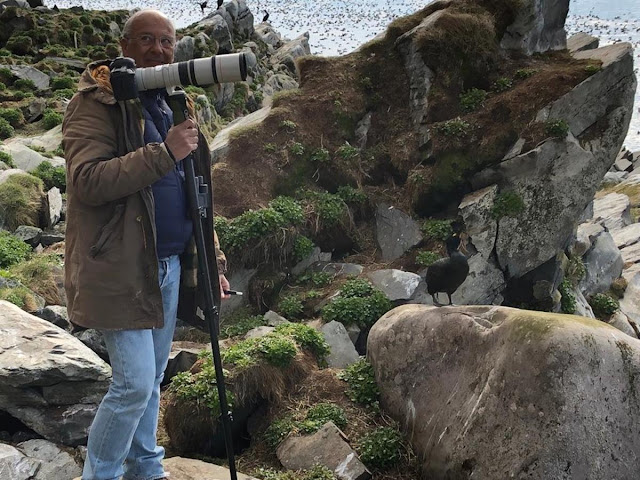



















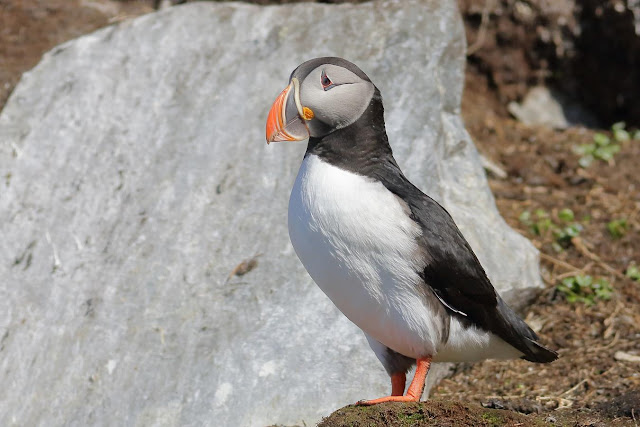


















































































































































































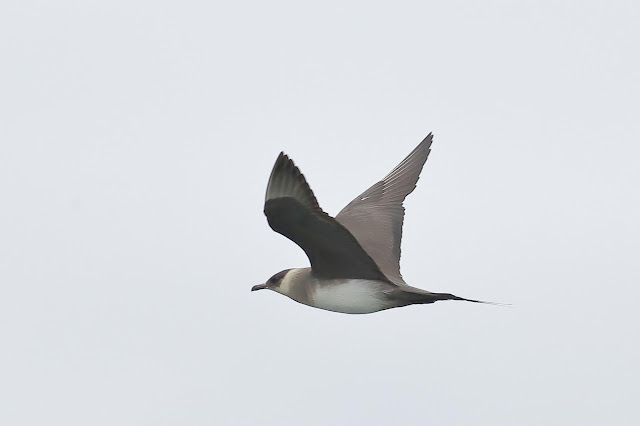
































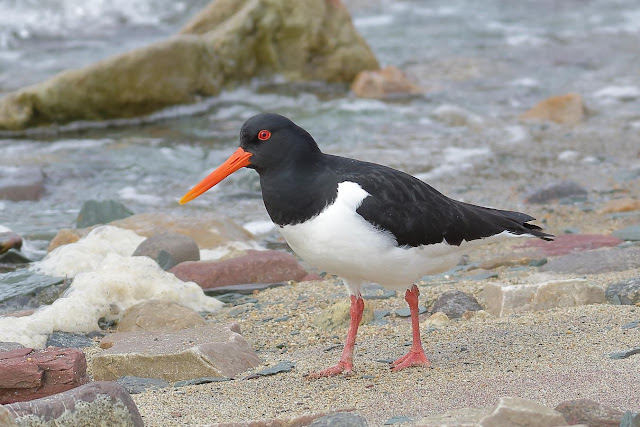












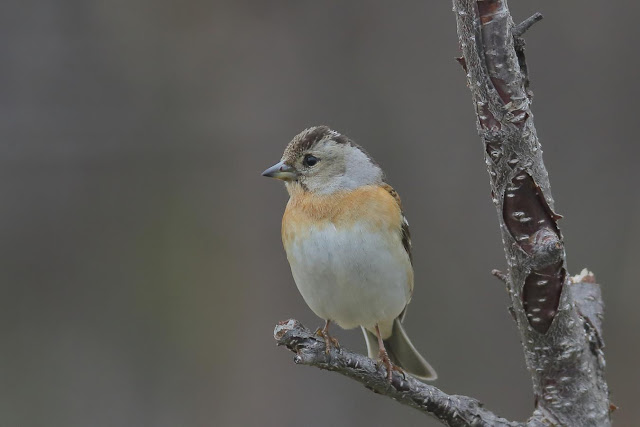







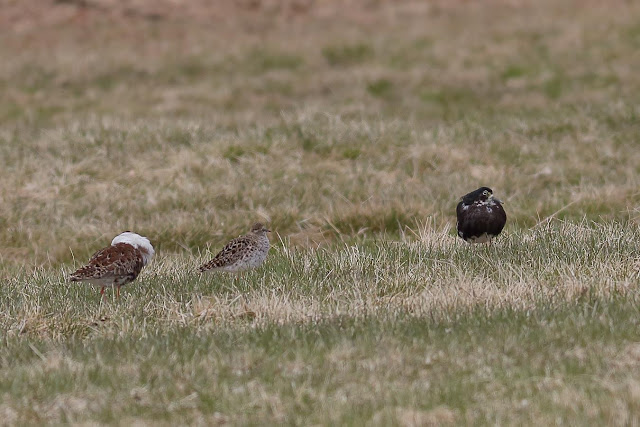



























































































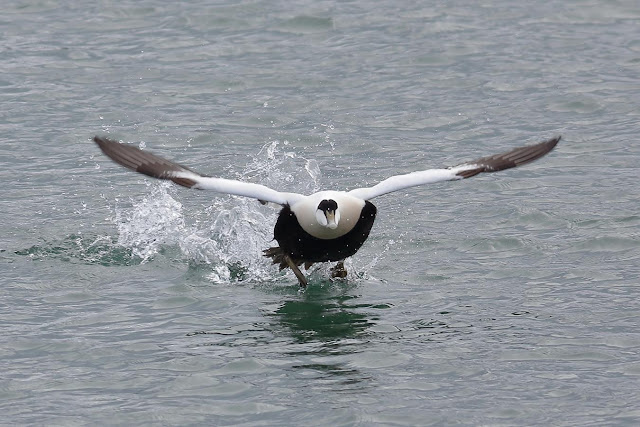






























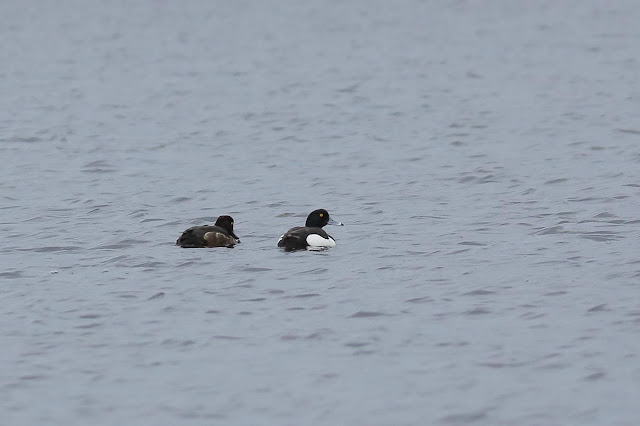













































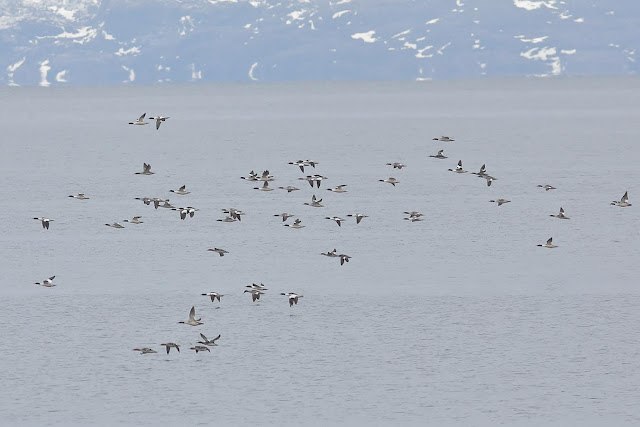





















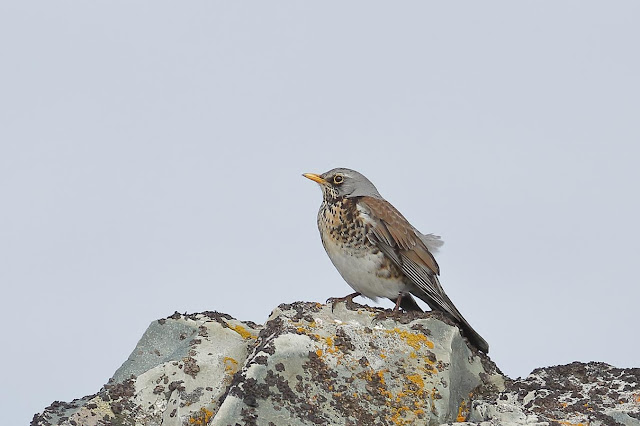




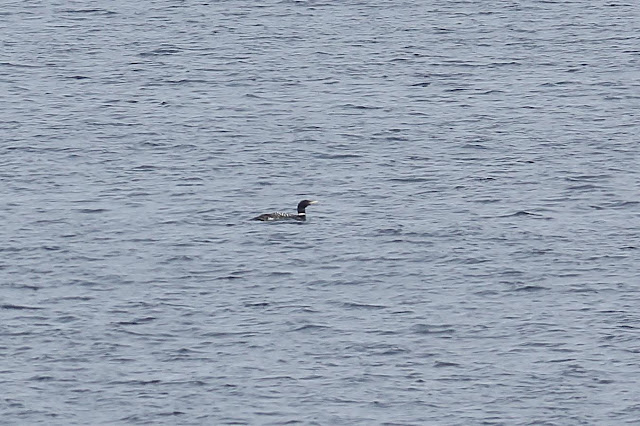

























































































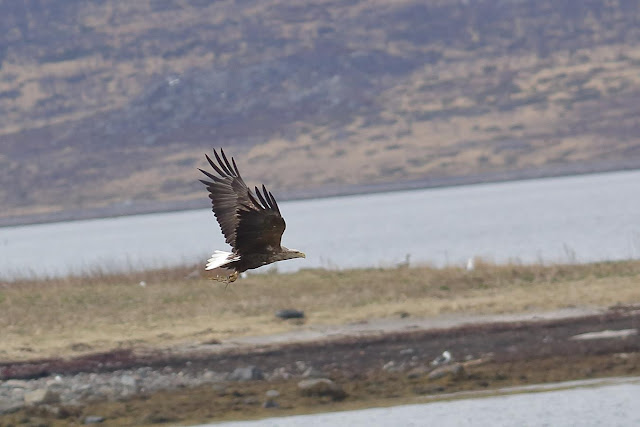






















































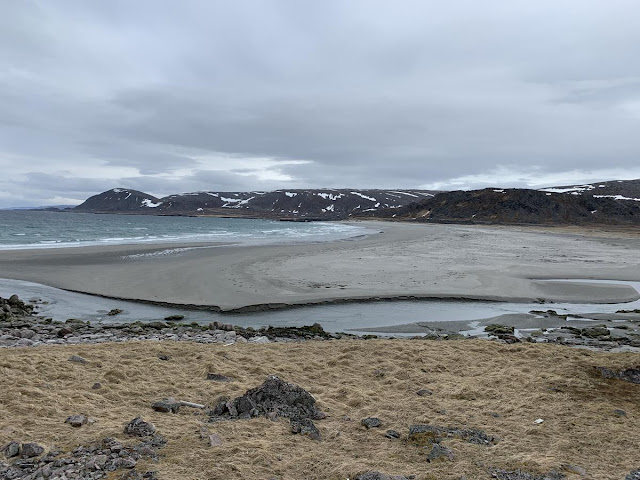







































Madre mia que viaje! Te quedas sin palabras, paraiso de las aves, que barbaridad! Ya me estas haciendo un hueco para el año que viene.
ResponderEliminarMuchas gracias Paco.
EliminarPues cuando quieras haces la reserva que aun quedan plazas disponibles.
Saludos,
Luis
Maravilloso viaje = maravillosas fotos. ¿Que más se puede pedir? Especies muy interesantes y preciosas en su momento de cría.
ResponderEliminarMuchas gracias Isabel.
EliminarLa verdad es que es un viaje que los pajareros debemos hacer al menos una vez.
Saludos,
Luis
Luis, como siempre, maravilloso reportaje y excelentes fotografías. Se me ponen los dientes largos.
ResponderEliminarNuevamente felicitarte por la magnífica labor que haces.
Un fuerte abrazo. Pepe
Muchas gracias Pepe, es un placer leer cosas así.
EliminarUn abrazo,
Luis
Un viaje alucinante con unos resultados fotográficos fantásticos. Los combatientes posaron para tí; unas tomas de las mejores que he visto de la especie. Yo tengo previsto visitar Varanger el 12 de marzo. Supongo que la fecha será muy temprana para pillar alguna de las especies que has pillado tú, no? Algún consejo? Gracias de antemano. Y enhorabuena de nuevo. Luis M. Cuaresma.
ResponderEliminarHola Luis,
EliminarMe imagino que verás muchas de las especie que vimos nosotros. Los Eideres Reales y de Steler estarán aun ahí en tropel. Los combatientes no los tendrás aún que hará mucho frio. EL consejo es que vayas muy abrigado.
Saludos,
Luis
Que regalo Luis. Mil gracias!!
ResponderEliminarUn abrazo.
Muchas gracias Roberto,
EliminarCelebro que te haya gustado.
Un abrazo,
Luis